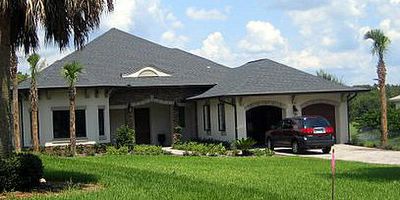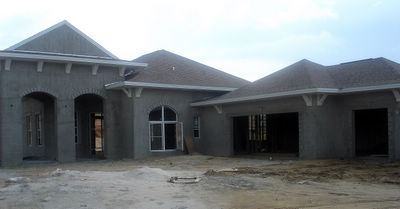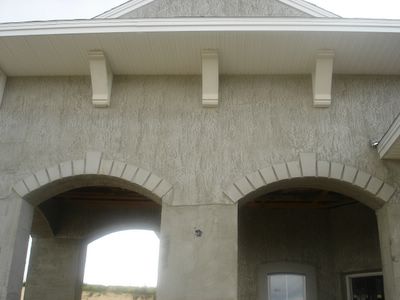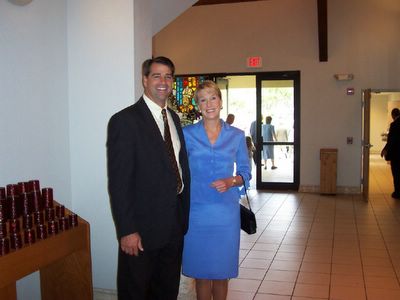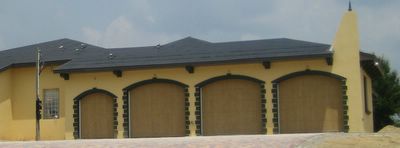
Now that Harbor Hills is selling the perfect Garage doors we thought it would be intersting to see the History of Garage doors.
If you are a history buff, or even if you are not, you may have wondered why this old saying comes up again and again throughout time: Necessity is the mother of invention. Well, here it is again. But if it's repeated so many times, there must be some truth to it, wouldnt you think? So when we are looking at the history of garage doors, its only natural that it would follow the history of the car. Let's see why.
All these cars where do we put them?
As the car worked its way into society, so did the need for somewhere to store it. And the result of that need, as described by an architect in 1912, was the creation of a new type of outbuilding. People in those days thought of an outbuilding as a carriage house the place where you keep your horse and buggy. Since a carriage house was a building that housed everything to do with your means of transportation, at first, cars were kept next to the horses, in the same building.
But there arose, shall we say, a stink about this situation. People who had cars in those days were usually of higher class than most, and to have their fancy new cars smell of horse manure just wouldn't do. So an alternative was sought.
The first garages were actually a lot like our modern-day parking lots, but with one level. People figured that if they could store more than one horse in a barn, then perhaps they could store more than one car in a similar structure. So they built large garages, some publicly-owned and some privately-owned. It became quite a business they'd charge $15-$20 a month for a parking space. For your money, you'd get a parking space, along with about 100 other cars, in a heated garage that was maintained and cleaned by the owner. This system worked well until about 1910, when there became too many cars for the garages to accommodate.
Back to the carriage house idea
After the parking garage idea, people started to look for a more convenient place for their vehicles closer to home. The carriage house had worked well before, if only they could get rid of those smelly horses. And that led to the invention of the garage as we know it today. The word garage comes from the French garer to shelter or protect. And that was its purpose to shelter and protect their vehicles.
So the carriage house model was used to build similar buildings that could house people's cars. They were simple structures and, of course, had a door, because one of the purposes was to protect the car from the elements. The first garage door worked just like a barn door. (In actuality, that's exactly what it was.) It was a double door, attached to the garage with strap hinges, that opened outwards. Garage doors in those days were really just basic sheds. And the doors were subjected to heavy wear and tear, being opened and closed almost daily. The hinges would creak, screws would get bent and eventually fall out. Also, if there was snow on the ground, it would block the path of the door, making it very hard to open without shoveling first. A better way was indeed needed.
With the invention of sliding tracks for doors, more versatile garage door designs were developed. It took a lot less space if the doors could remain within the area of the garage so that, on a sliding track, they could be moved sideways, across the front of the garage. But that meant that the garage had to be at least double the width of the door. Another development was needed. And it came in the form of a garage door that was cut into sections, then hinged together at intervals, allowing it to fold around a corner. Now the garage didn't need to be much wider than the door itself.
The invention of the folding overhead door
A further solution to the question of space came with the invention of the overhead door by C.G. Johnson in 1921. This door could be lifted upwards, folding parallel to the garage ceiling. And 5 years later, in 1926, Mr. Johnson also invented the electric door opener, to assist those who had trouble lifting the heavy wooden door. This was the beginning of the Overhead Door Corporation, which is one of the leading manufacturers and servicers of garage doors today.
Overhead doors became the choice of consumers. Wayne-Dalton, one of the leading manufacturers and servicers of garage doors and garage door openers, has an interesting history. It started out when Emanuel Mullet bought a garage door business from Ervin Hostetler in 1954. Ervin had already invented a wooden door that folded horizontally to store itself overhead.
Wayne Door, as Wayne-Dalton was known in 1956, was moved to Mt. Hope, Ohio, the largest Amish community in the world. That turned out to be a very crafty move. They hired the fine Amish craftsmen living in the region, resulting in the production of a line of superior-quality garage doors. Throughout their thriving history, Wayne-Dalton has been a leader in garage door innovation, introducing new technology in the areas of garage door openers, pinch-resistant doors, and tamper-resistant bottom brackets, just to mention a few.
People wanted style in their garage doors
As architecture changed, so did people's ideas of garages. Because of the decreasing amount of available space, garages had to be moved closer to the houses. So architects decided to incorporate them right into the design of the house themselves, giving them the same style and color as the rest of the house. So as the variety of house designs expanded, so did garage designs.
All kinds of house and garage styles were sought out, like Colonial, French, Mediterranean, and even Old English. One of the more popular architectural forms was Craftsman, with their open framework, their lattices, and their pergolas. The garage was indeed becoming an architectural marvel and, of course, the garage doors had to match. So the demand for fancier garage doors became widespread, and the industry flourished.
Garage door materials progressed with technology
Garage doors had always been made out of wood. But there were several disadvantages to wood doors. Wood was subject to the weather, warped by the heat of the sun, and rotted by the rain. So it needed periodic maintenance like scraping and re-painting or even total replacement. However, technology came up with some great alternatives.
Galvanized steel garage doors were the next innovation, coming into use in the 1970s. Steel wasn't as good an insulator as wood, but if the door needed insulation, they could put two pieces together, with polystyrene insulation between them a Styrofoam sandwich. That helped to keep garages warmer and, at the same time, increased the length of a garage door's life by several decades.
The next type of new material used for garage doors was fiberglass, soon followed by composites, like resin-filled wood, and eventually vinyl-covered aluminum, similar to aluminum siding. Since aluminum siding was being used for houses, it was a simple process to match the garage doors to the house, making them an attractive part of the home design.
With the popularity of the garage door, combined with the ever-progressing electrical technology of the day, the garage door opener became the next natural fulfillment of the consumer's desires. People were always looking for an easier way. And opening those heavy garage doors by hand wasn't easy, to say the least. And they had to get out of their cars in the rain and snow. So again, with necessity being the mother of invention, along came the automatic garage door opener. Now people could drive up to their houses and open the garage door as they approached, protecting themselves from the weather. They didn't have to get out of their cars until they were safe and dry inside their garages. It was a wonderful invention, but it created a whole new issue ' safety.
Garage door openers became killers
What could be more enjoyable to a child between 2 and 8 years old, than watching an automatic garage door opening and closing all by itself? Garage doors became a source of fascination to little children and a source of real danger, too; perhaps even fatal danger! It was reported that at least 85 children in the U.S. had died or suffered permanent brain damage between 1974 and 1995, in accidents involving automatic garage door openers.
This terrible situation led the Consumer Product Safety Commission in the U.S., in 1993, to pass a law that required all garage doors to be equipped with photoelectric sensors and pressure-sensitive sensors. The photoelectric sensors were electric eyes mounted 6 inches from the ground, while the pressure-sensitive sensors were mounted on the bottom of the door. If either of these sensors detected any object under a garage door while it was closing, they would automatically reverse themselves and fully open.
Unfortunately, although these sensors were installed, many of them didn't work as well as they should. At one time, tests were done on 50 openers; only 40% of them reversed and, before reversing, they exerted 130 pounds of pressure, enough to break an arm or leg of a small child. Subsequently, better sensors have been developed and now, an injury caused by a garage door closing on somebody is very rare.
Portable garages have been around as long as the garage door
An interesting innovation in the garage door industry was the portable garage. The first record of a portable garage was in 1908, when you could buy one from the Sears Roebuck catalog. These garages were partially prefabricated and were made from slabs of wood or metal. Sears Roebuck also sold mail-order garage kits, in a variety of patterns and styles.
Today, there are many styles and sizes of portable garages available. They're made from clear or colored ultraviolet-resistant, fire-retardant plastic sheeting or tarps, stretched over metal tubing. These are great for storing a boat or a recreational vehicle. You can even get an instant garage, consisting of a plastic sheet which you drape over your car, support with aluminum poles, leaving about 3 feet around your car, then pump up with warm air a great place to work on your car in the winter.
The old carriage house makes a return
Isn't it strange how people continually seem to be trying to relive the past? Here we are, with all kinds of technology available to us, with all kinds of selection to choose from in garage doors as far as style, color, material, etc. And now, there are many people asking for the old carriage house design. If you look at some of the garage blueprints and designs available today, you'll see more than just a few carriage house styles. What people want now is the look of the old carriage house, with it's barn-style doors, but with the modern convenience of the automatic garage door, and its maintenance-free materials.
There's a U.S. company that's answered the call for old-style garage doors. They're called Montana Rustics, and they've found a way to bring the past back to the present. They'll make you a garage door out of authentic materials like 100-year old Southern Pacific Railroad Trestle ties, weathered for years over the Great Salt Lake. Or they'll make your garage door out of remnants from an old stage coach. Now that's innovation!
So whether you want to live in the past or the present, there's a garage to suit your taste. And with every garage, there's a garage door that'll exactly match your house. It comes complete with a garage door opener and, perhaps, if you need it, even a garage door screen. Garages and garage doors have come a long way since the beginning of the 20th century. And they'll continue to satisfy your desires for comfort and convenience, long into the future.
About The Author
Gareth Marples is a successful freelance writer providing valuable tips and advice for consumers purchasing atv off road helmet goggles, Arai helmet parts and motorcycle half helmets. His numerous articles offer moneysaving tips and valuable insight on typically confusing topics.
This article on the "The History of Garage Doors" reprinted with permission.



